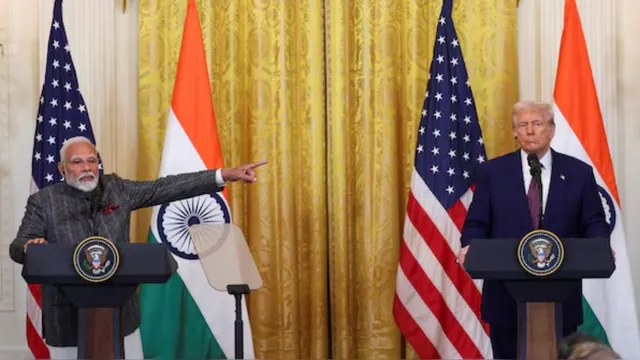- By Supratik Das
- Mon, 02 Jun 2025 11:04 AM (IST)
- Source:JND
The United States has officially rejected India's notice at the World Trade Organization (WTO) on retaliatory tariffs on US imports, further escalating the current trade conflict between the two nations over high US import duties on steel and aluminium. Invoking national security under Section 232 of the Trade Expansion Act of 1962, Washington has rejected India's argument that the tariffs are "safeguard measures" as per WTO norms. In its May 22 response to the World Trade body, the US categorically asserted that it would not engage in consultations under the WTO Agreement on Safeguards, essentially shutting the door on official attempts at dispute settlement. India, which had sent a WTO notification on May 9, warned to suspend trade concessions to the US if the issue was not settled within 30 days. With the deadline of June 8 nearing, New Delhi officials are now considering retaliatory measures, including increasing import duties on American products like almonds, walnuts, apples, and some metal products.
India's Retaliatory Tariff Plans: What's At Stake?
India's iron, steel, and aluminium exports to the US amounted to 4.56 billion USD during FY25, including 3.1 billion USD worth of articles of iron and steel, and 860 million USD in aluminium items. The abrupt increase in US tariffs, doubled to 50 per cent from June 4 under the directiv of the Trump administration, poses a significant challenge to Indian exporters and jeopardizes their profit margins. Based on India's WTO filing, the US safeguard duties might affect 7.6 billion USD worth of Indian exports per year, which would equal 1.91 billion USD in extra US duties. India's proposed retaliatory countermeasures aim to offset this financial input by similar retaliatory duties on products of American origin.
In its official reply to the WTO, the US claimed that Section 232 tariffs are not "safeguard measures" and thus beyond the ambit of multilateral settlement under Article 8.2 of the Agreement on Safeguards. "The United States will not negotiate the Section 232 tariffs under the Agreement on Safeguards since we do not consider the tariffs a safeguard measure," the US communication stated. This leaves the WTO's role in resolving the dispute effectively on the sidelines, considering the current dysfunction of the WTO Appellate Body and the lack of a clear path to enforcement.
Trade Or Talks? What To Expect
Though the Indian commerce ministry has made no official comment, according to Hindustan Times, sources indicate that New Delhi remains willing to settle the dispute through diplomatic means. A US trade delegation will be visiting India this week, and there is still talk of a limited trade agreement or "early harvest" deal. India could suspend retaliation if there is substantive development on a preferential trade agreement of steel and aluminium in the proposed Bilateral Trade Agreement (BTA).
ALSO READ: India’s Big Bet On America? Vikram Misri’s Power-Packed US Visit; Here’s What It Means For Nation
Former Indian Trade Service officer and the initiator of Global Trade Research Initiative (GTRI), Ajay Srivastava, said, "India had already indicated its willingness to retaliate under WTO provisions. With tariffs now doubled by the US, the Indian government may not baulk much longer." India and the US have had run-ins on metal tariffs before. A similar confrontation in 2018 under the Trump administration resulted in India slapping duties on 28 US items and making a formal complaint at the WTO. The standoff was later resolved in June 2023 through a Mutually Agreed Solution (MAS), where the US provided some market access through Section 232 exclusions, and India revoked retaliatory tariffs.
With Washington having categorically rejected India's WTO notice and denying bilateral negotiations under the safeguards regime, the burden now rests with New Delhi. The government either has to retaliate through import tariffs or try to find a diplomatic solution through talks. As the clock ticks towards June 8, India's next step will not only determine bilateral trade worth billions but also the tone for future trade diplomacy between two of the world's largest democracies.

